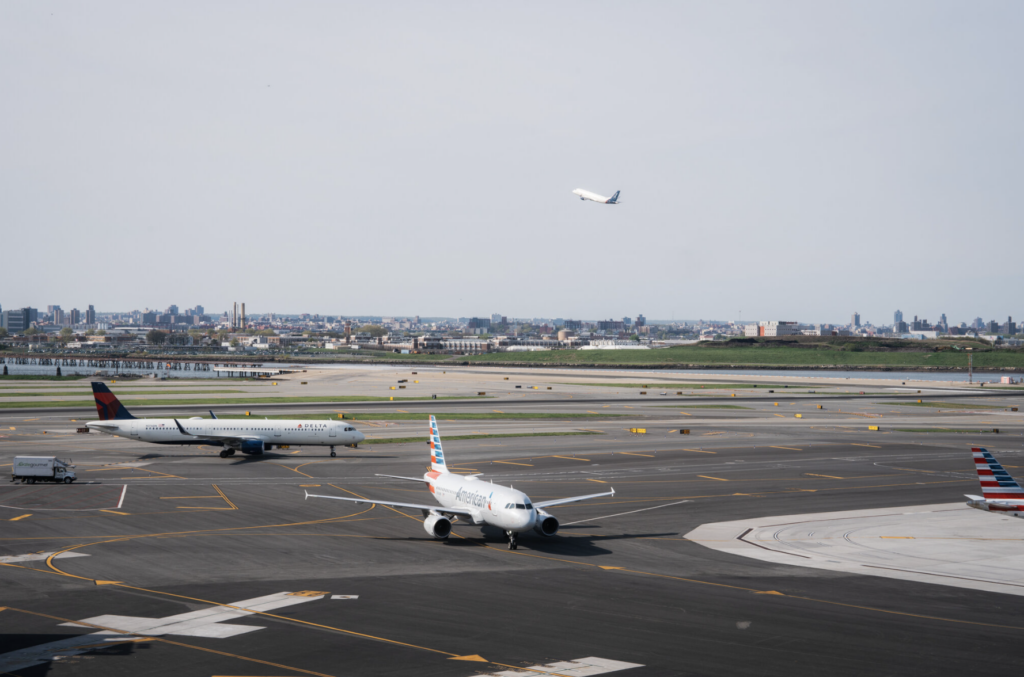Alarming Rise in Near Misses Among U.S. Airlines


Based on records from the FAA and NASA reviewed by The New York Times, safety standards in air traffic are frequently breached. (Photo: Desiree Rios for The New York Times)
Recent incidents have thrust the safety of air travel in the U.S. into the spotlight. An investigation by The New York Times has revealed a disconcerting number of close calls in the skies and runways of the country, even though the U.S. has not experienced any major plane crashes in over a decade.
- In New Orleans on July 2, a Southwest Airlines pilot narrowly avoided a collision when aborting a landing, as a Delta Air Lines 737 prepared for take-off on the same runway.
- In San Francisco on July 11, an American Airlines jet narrowly missed a Frontier Airlines plane during take-off. Another German airliner faced a similar situation moments later.
- A few weeks later, an American Airlines flight bound for Dallas had to swiftly ascend 700 feet to avoid a United Airlines plane, due to an error by an air traffic controller.
There were 46 close calls involving commercial airlines last month, many of which were not publicly disclosed.
On average, close calls happen multiple times a week.
The majority of incidents occur due to human errors near or at airports. A significant contributing factor is the nationwide shortage of air traffic controllers.
While some incidents make the news, many remain undisclosed.
Based on records from the FAA and NASA reviewed by The New York Times, safety standards in air traffic are frequently breached. Despite many of these incidents not resulting in crashes, their frequency is concerning.
The U.S. aviation system, catering to almost three million passengers daily, prides itself on its safety record. However, recent close calls have raised eyebrows among industry insiders, leading to fears of a potential tragic incident in the future. Numerous confidential safety reports corroborate this rising concern.
One glaring oversight is the lack of runway warning systems at many U.S. airports, despite recommendations from safety experts. The most pressing issue, however, remains the chronic understaffing of air traffic control facilities. This strain leads to overworked controllers, risking their ability to operate efficiently and safely.
Major airlines have reaffirmed their commitment to safety, emphasizing their heavy investments in training and technology. They also argue that the lack of major crashes underscores the system’s efficacy.
The FAA acknowledges the multi-layered safety approach has played a crucial role in preventing fatalities. Their current objective is to reduce close calls to zero. The agency also admits to an increase in runway incursions, although there has been an improvement since 2018. The FAA cites funding constraints as a reason for not installing more runway warning systems but is implementing other measures to bolster safety.
However, air traffic controllers, on conditions of anonymity, have expressed that the FAA’s actions are not sufficient. They paint a grim picture, highlighting extreme fatigue, plummeting morale, and a rising tendency to take shortcuts, which could potentially lead to tragic accidents.
A vast majority of U.S. air traffic control facilities are understaffed. The roots of this issue trace back to the 1980s when the Reagan administration replaced striking controllers. The pandemic further exacerbated staffing challenges, as training slowed due to health restrictions and many controllers retired.
Many controllers are working on a rotating schedule that can lead to physical and psychological exhaustion. This fatigue, coupled with mandatory overtime, has been identified as a significant factor contributing to potential safety hazards.
Over the years, there have been numerous warnings about the state of U.S. air safety. The Department of Transportation’s inspector general has highlighted increasing “losses of separation” incidents, while the National Transportation Safety Board has called for better runway collision alert systems. However, the FAA has made limited progress in implementing new surface detection systems.
The FAA has requested additional funds to train and recruit 1,800 new controllers in the 2024 fiscal year. However, the anticipated loss of over 1,400 controllers next year means that the staffing gap will remain a pressing concern.
Ben Dorks, CEO of Ideagen—a provider of global regulatory and compliance software—shared comments with Avionics International in response to the New York Times article.
“Aviation bosses know this is an issue. We recently spoke to 500 CEOs from a range of regulated industries around the world and 47% of those in aviation said safety is a key investment priority over the next 18 months.
“But in order to have a thorough understanding of how to mitigate risk, you need a complete view of safety intelligence and our research also revealed that more than half (53%) were using a number of different systems to manage their compliance, safety, and risk, and these weren’t integrated, so the picture is fragmented.
“That becomes even more important when you’re having to do more with less. The skills shortages are having a crippling effect across many regulated industries. In our research, more than half of the CEOs we spoke to said mental health absence is their biggest risk to resilience and almost a quarter said staff shortages.”
“There’s a recognition among the C-suite that this is something they need to address. Aviation can afford you a rewarding, valuable career, but it’s also incredibly high risk and that pressure is felt by those working in it. Technology is a real enabler here to do some of that heavy lifting, relieve some of that pressure, and free highly-trained, skilled workers to add value where it matters most.”
—————
Boost Internet Speed–
Free Business Hosting–
Free Email Account–
Dropcatch–
Free Secure Email–
Secure Email–
Cheap VOIP Calls–
Free Hosting–
Boost Inflight Wifi–
Premium Domains–
Free Domains





